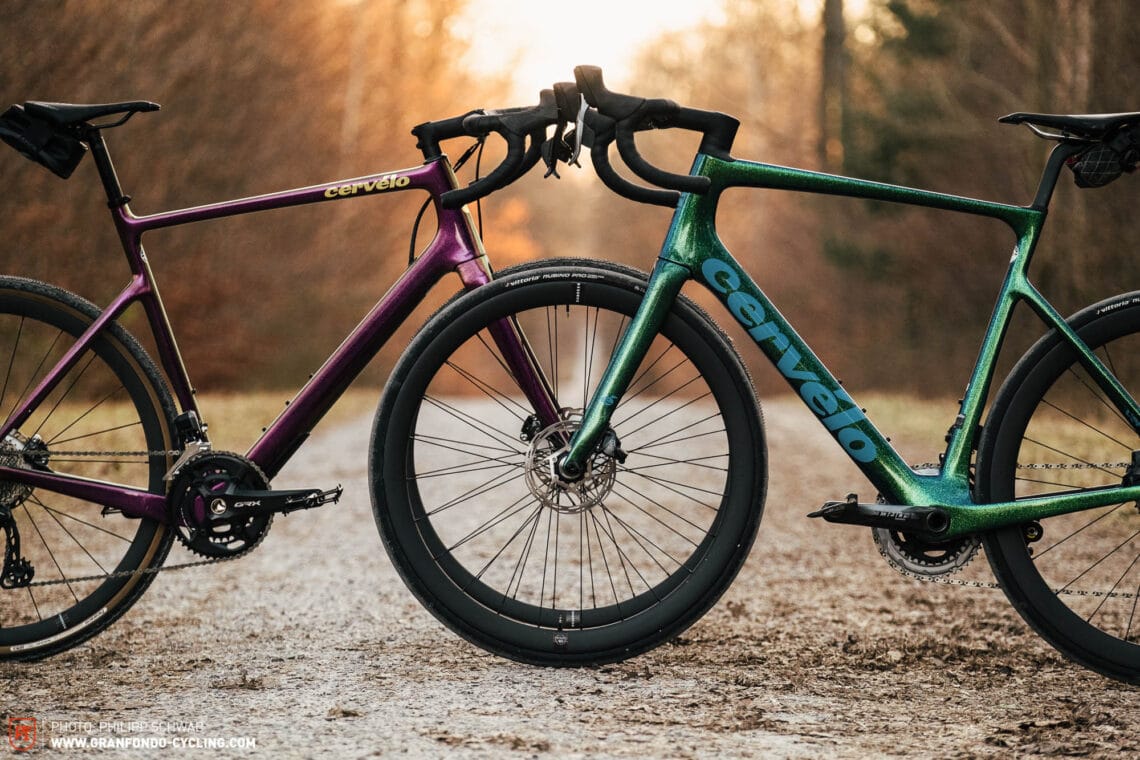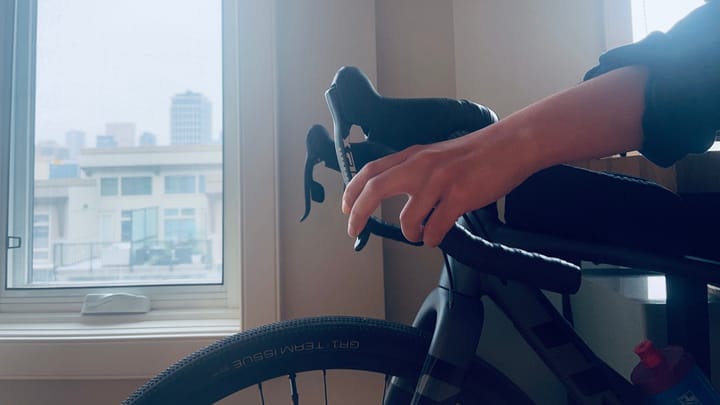Road vs. Gravel Bikes: The Best Bike for Your City, Budget, and Riding Style

Spring is here in most towns, and just round the corner (hopefully!) if you're in Calgary where I'm right now. If you’re thinking about investing in a first/new bike, and can't quite figure out whether to go with a road bike or a gravel bike, you might feel overwhelmed by all the options. Should you go for aero gains and speed, or is it better to have versatility and comfort? And most importantly, how much should you spend without wasting money?
This guide provides a detailed breakdown of which bike is right for you, considering where you live, your budget, local cycling events, and road conditions. These are the things I considered when purchasing my first road bike two years ago, and found myself considering pretty much the same metrics again this year when I move from Vancouver to Calgary (very different climates, riding cultures, and infrastructure).
This guide also includes a comparison of three cities - Vancouver, Calgary, and Tucson - to illustrate how location impacts bike choice. Lastly, I’ll share my personal experience purchasing a Trek Checkpoint ALR 4 (Gravel) and a Felt VR40 (Road) - both around the $2000 price point - to give you insight into what’s actually worth the investment.


Left: Gravel (PatitucciPhoto.com); Right: Road (BanffCycle.com/JohnEvelyPhoto.com)
🌦 How Where You Live Affects Your Bike Choice
Weather and Infrastructure Considerations
Your local climate, road conditions, and cycling infrastructure directly impact your experience with either a road or gravel bike. Below is a comparison of three cities with distinct riding conditions:
🌧 Vancouver: Mild year-round with an average of 168 rainy days per year, Vancouver has a well-established road cycling culture, featuring extensive bike lanes and events like the RBC GranFondo Whistler. If you prioritize group rides, races, or long-distance road riding, a road bike makes the most sense. Road bikes here benefit from the smooth urban pavement and scenic coastal routes.
❄️ Calgary: Calgary’s climate includes long winters with snow from October to April, but also plenty of urban parks, mixed-terrain trails, and a growing gravel cycling scene. Gravel bikes are more practical due to road grit, unexpected weather shifts, and safer off-road cycling options. Additionally, urban pathways like the Bow River Trail offer multi-surface routes that suit gravel bikes well.
☀️ Tucson, Arizona: With over 300 days of sunshine annually and an elevation ranging from 2,500 to 9,000 feet, Tucson is a prime destination for both road and gravel cycling. El Tour de Tucson, one of North America’s largest road cycling events, attracts thousands of riders each year. However, Tucson is also home to world-class gravel routes, including those in the Santa Catalina Mountains and Saguaro National Park. For endurance training and speed, a road bike is optimal, but for off-road adventure, gravel is a great option.
Traffic and Safety Considerations
🚨 Do you feel comfortable riding near cars? If your city has poor cycling infrastructure and high traffic density, a gravel bike can help you avoid high-traffic roads by allowing you to ride on multi-use paths or gravel trails.
🏁 Local Cycling Events & Group Rides
If you enjoy group rides and races, your local cycling community could influence your choice:
- 🚴 Vancouver → Road cycling is dominant, with events like RBC GranFondo Whistler and various club rides. A road bike will integrate you into these communities best.
- 🌿 Calgary → Gravel cycling is growing quickly, with events like the Ghost of the Gravel race and multi-surface bikepacking routes. Gravel bikes have more versatility here.
- ☀️ Tucson → Home to El Tour de Tucson, an annual 100+ mile road event, but also plenty of gravel-specific races like the Spirit World 100. Your choice depends on whether you prioritize road or gravel events.
🔥 Pro Tip: Google ‘bike club near me’ and check event calendars to see which type of cycling is most popular in your area.
💰 How Much Should You Spend? Price Breakdown
The price of a bike significantly impacts the quality of components, durability, and ride comfort. Below is a general price breakdown:
🚲 Bikes Under $500 – Casual Riders & Basic Commuters
- Primarily big-box store bikes (Canadian Tire, Costco) or second-hand options.
- Suitable for short commutes but not the most ideal for long-distance rides.
- Perfect if you're not 100% sure that recreational/competitive biking is for you. You could always buy, try, and sell on FB Marketplace or Craigslist/Kijiji etc.
- Example: Northrock SR1 (Costco, ~$750)
🚲 $500 - $1,000 – Entry-Level, Good for Beginners
- Aluminum frames, Shimano Claris/Sora groupsets (lower durability but affordable).
- Good for light road riding or basic gravel paths.
- If you're likely only going out for recreational rides once every couple of weeks, this is perfect.
- Examples:
- Triban RC520 (Decathlon) – Great budget road bike.
- Giant Contend AR 4 – Hybrid road/gravel capabilities.
🚲 $1,000 - $2,500 – The Sweet Spot (Best Value for Money)
- Shimano Tiagra/105 groupsets (better shifting, increased longevity).
- Aluminum frames with carbon forks (lighter, better vibration absorption).
- Ideal for serious recreational riders.
- What I bought:
- 🚴 Felt VR40 (Road Bike) – Endurance geometry, comfortable for long rides.
- 🌿 Trek Checkpoint ALR 4 (Gravel Bike) – Versatile, suited for rough roads & pavement.
🚲 $2,500 - $5,000 – Performance and Durability
- Full carbon frames with high-end components (Shimano Ultegra, SRAM Rival).
- Electronic shifting (on some models) and improved aerodynamics.
- Great for riders who train seriously or want a long-term investment.
- Perfect is budget doesn't matter as much, but you're still only getting marginal gains compared to bikes that are slightly more affordable at $2000
- Examples:
- Specialized Roubaix Sport (Road) – Endurance-focused, smooth ride.
- Cervelo Áspero (Gravel) – Lightweight, high-performance gravel machine.
🚲 $5,000+ – Premium & Race-Ready Machines
- Electronic shifting (Shimano Dura-Ace Di2, SRAM Red AXS).
- Lightest carbon frames (sub-8kg weight).
- Designed for professional racing and top-tier endurance performance.
- If you're not a strong rider, do not make the mistake of believing that these bikes will magically make you better!
- Examples:
- Trek Madone SLR 9 (Road) – Aero-optimized, race-ready.
- Open U.P. (Gravel) – One of the fastest gravel bikes available.
🔥 If you’re not racing, bikes over $5,000 may offer diminishing returns in real-world benefits.
🔄 Road vs. Gravel – Which One is Right for You?
Still unsure? Here’s a simple breakdown:
🚴 Road Bike = Best if you:
✔ Ride primarily on paved roads.
✔ Prioritize speed and efficiency (typically 3-5 km/h faster on pavement than gravel bikes).
✔ Participate in group rides or Gran Fondos.
🌿 Gravel Bike = Best if you:
✔ Want to explore multi-surface routes (gravel roads, light off-road).
✔ Prefer to avoid heavy car traffic.
✔ Need a bike that’s better for winter conditions or rough roads.
🚨 Example: If I lived in Vancouver or Tucson, I’d likely get a road bike. But in Calgary, I’d choose gravel.
📍 Final Thoughts – Making the Right Choice
- If you ride primarily on paved roads, get a road bike.
- If you're all about aero and speed, and don't mind being close to traffic - road.
- If you value versatility, safety, and year-round use, go for gravel.
- If you're still not 100% sure, I'd go with the gravel bike...they're still fine on roads (just a tad slower) and give you the flexibility to go off-road as well.
- If you want both, consider getting two lower-range bikes instead of one premium model and go out for a few rides! You can always sell if you're not feeling it.
Hope this was helpful! I'm just a beginner(ish) myself, so there's probably stuff I'm missed, but I think this covers a lot of the basics!
